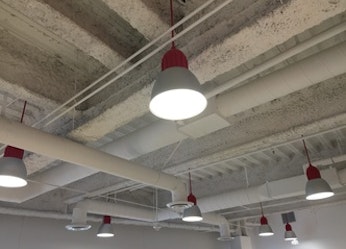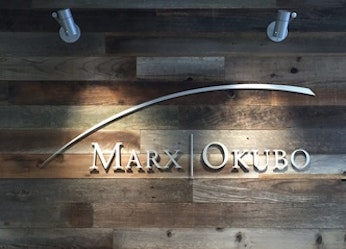Once upon a time creative office spaces were raw, unfinished, open floorplans in old, sometimes historic, buildings. Startup companies liked the flexible layouts and inexpensive rent. Over the years, the popularity of creative offices has grown and evolved into a design concept all its own—one that comes with special set challenges and misconceptions.
Characteristically comprised of an open floorplan, flexible workspaces, designated lounge and break areas, and fun, bright colors, today's creative offices often feature industrial design elements such as exposed structures, exposed concrete slab flooring, and materials like reclaimed wood and metal.
Some of most successful and renowned startups have set precedence on providing covetable work environments based on this creative office model. And the trend has inspired even traditional industries and well-established corporations to adopt creative design when renovating Class A commercial office buildings.
Learning from the inside out
The open-concept floorplan may be fun and functional, but that doesn't always mean it's simple or cheap to implement. Recreating the raw, unfinished ambiance of old industrial or historic buildings in a modern commercial office building comes with challenges. In fact, Marx|Okubo experienced some of these firsthand as we recently outgrew a dated office space and transitioned to a more inspiring environment that would better represent the collaborative nature of our company.
Using the color palette of our brand, we infused our new space—on the ninth floor of a Class A office building with windows overlooking a central lake—with exposed concrete slab flooring and a reclaimed-wood accent wall. Our open-plan design allowed for window-side workstations; low-wall separators; more natural light; glass paneling; and flexible, freestanding furniture.
Despite comprehensive planning and design, the exposed nature of the structure posed some surprising issues during construction. For example, a fire sprinkler pipe impeded the construction of a wall, yet the floorplan restricted relocating the wall. We also discovered the center of the main HVAC supply duct ran right into the front walls of some of the interior offices, and our concept for a row of pendants conflicted with newly exposed ductwork.
The issues tasked our engineers with problem solving as creative as the space itself, and the experience taught us more than ever about real-world complexities in what is sometimes misconstrued as straightforward creative office design. Here are some you should be aware of:
Exposed structures are inherently more expensive than acoustic ceiling tile, or sometimes not a viable option at all. For example, with open ceilings comes highly visible ductwork, sprinkler lines, data cabling, electrical conduits and fasteners. Conditions once concealed within the existing structure can become an issue once revealed. And it can be costly to make changes later, so it's important coordinate with mechanical engineer early and plan accordingly.
Concrete flooring, although seemingly basic, can be costlier than carpet. Imperfections previously hidden under the carpet and other and preexisting conditions exposed during demolition may need to be addressed. Additionally, you'll need to add in the cost of grinding, polishing and sealing concrete for safety and aesthetics.
Open floorplans require more thoughtful planning. How will you incorporate those glass panels in place of drywall? How will you work within the open floorplan to arrange furniture, lay out workstations and incorporate offices for employees' privacy preferences? You'll also need to build in the design strategies and costs of hiding wires and cabling, and possibly integrating networking into furniture.
As you consider designing an industrial loft space or retrofitting traditional office environment, make sure you've done your research on potential obstacles and budget busters. Having engineering consultants on hand who are well versed in the realities of creating inspired spaces can go a long way in helping you avert issues, manage risk and problem solve quickly—and creatively.










